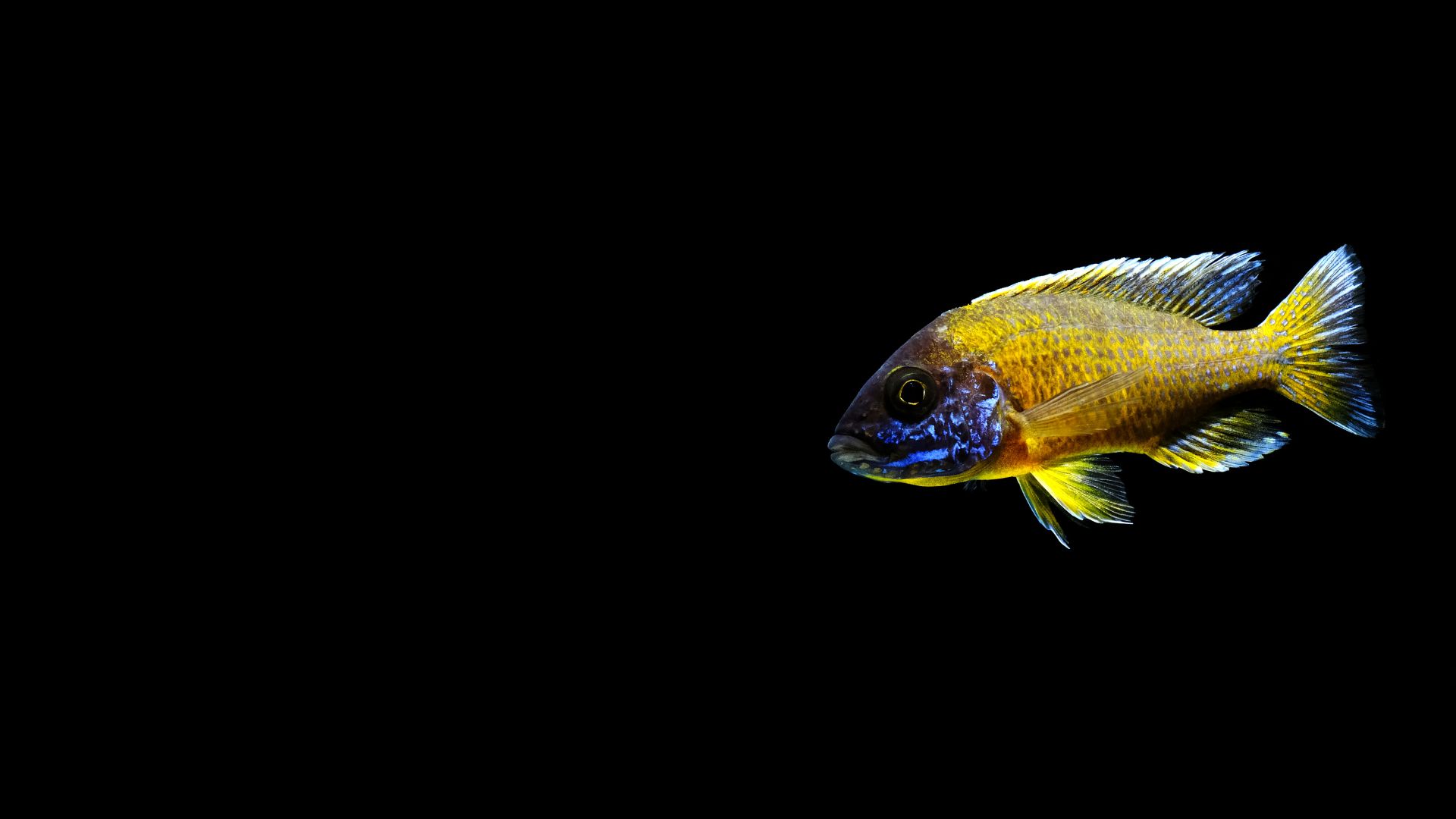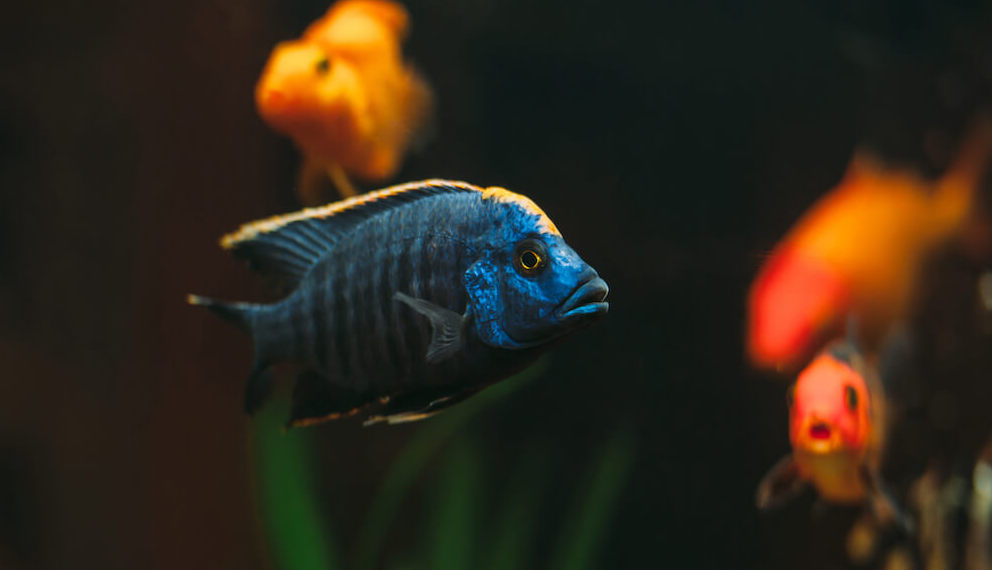
African Cichlid
Scientific name: Various species within the Cichlidae family
African Cichlids are a diverse group of fish originating from the African Great Lakes, primarily Lake Malawi, Lake Tanganyika, and Lake Victoria. They are celebrated for their vibrant colors, complex social behaviors, and distinct ecological roles in their native habitats.
These fish thrive in warm, mineral-rich waters, and their adaptability makes them popular among aquarium enthusiasts. Due to their territorial nature, special care must be taken to maintain a harmonious environment in captivity.
IUCN Red List of Threatened Species : Varies by species
African Cichlids require regular water changes to maintain high water quality. Weekly water changes of 20-30% are recommended, especially in heavily stocked tanks. It’s also important to use a water conditioner to remove chlorine and chloramine from tap water before adding it to the tank.
For optimal health, provide a varied diet that includes both plant-based and protein-rich foods to mimic their natural diet and support their vibrant colors.

Navite Location
African Great Lakes (Lake Malawi, Lake Tanganyika, Lake Victoria)
Varieties
Peacock Cichlids, Mbuna, Haplochromis, Frontosa, Tropheus
Suggested Tank Mates
Synodontis Catfish, Plecos, Other African Cichlids (with care), Larger Tetras
Tank Mates to Avoid
Smaller Fish, Docile Community Fish, Aggressive Central American Cichlids
Diet
Pellets, Spirulina, Vegetables (like zucchini or spinach), Brine Shrimp, Mysis Shrimp
Breeding
Many African Cichlid species are mouthbrooders, where females carry fertilized eggs in their mouths until they hatch. Some species form pairs or breed in harems, and females protect fry by taking them back into their mouths for safety.
Lifespan
5 to 10 years
Size
10 to 15 cm (4 to 6 inches), depending on species
Minimum Tank Size
150 Liters (40 gallons)
Optimum Tank Temperature
24°C to 28°C (76°F to 82°F)
Ideal pH Level
6.0 to 7.5
Water Hardness
10 – 20 dGH
Common Health Issues
Malawi Bloat, Ich (White Spot), Hole-in-the-Head Disease, Fin Rot, Parasites
Interesting facts
Mouthbrooding Behavior
Many African Cichlids are known for their unique mouthbrooding behavior. The female carries fertilized eggs in her mouth, protecting them until they hatch. This fascinating adaptation helps ensure the survival of the young in environments with numerous predators.
Complex Social Hierarchies
African Cichlids exhibit complex social behaviors, including establishing territories and dominance hierarchies. These behaviors are most evident in male cichlids, who compete for territory and mates.
Bright Colors for Attraction
The vibrant colors of African Cichlids are not just for show; they play a crucial role in attracting mates and establishing dominance. The intensity of coloration often indicates a fish’s health and fitness.
Habitat Specialization
Many African Cichlid species have evolved to fill specific ecological niches in their native lakes. Some species are herbivores grazing on algae-covered rocks, while others are carnivorous or omnivorous, feeding on small invertebrates or other fish.
Highly Adaptable
African Cichlids are highly adaptable to different water conditions, which makes them resilient and well-suited for aquarium life. However, maintaining stable and suitable water parameters is essential for their health and well-being.
African Cichlid FAQ’s
Can African Cichlids live with other fish?
Yes, African Cichlids can live with other fish, but it is important to choose tank mates carefully. They do best with other robust and similarly sized fish that can handle their territorial behavior. Suitable tank mates include Synodontis Catfish and other African Cichlids of similar temperament.
What do African Cichlids eat?
African Cichlids are omnivorous, and their diet can include high-quality pellets, spirulina, vegetables such as zucchini or spinach, and protein-rich foods like brine shrimp or mysis shrimp. A varied diet helps maintain their vibrant colors and health.
How do you breed African Cichlids?
Breeding African Cichlids involves setting up a separate breeding tank with stable water parameters. Many species are mouthbrooders, where the female carries the fertilized eggs in her mouth until they hatch. To encourage breeding, provide plenty of hiding places and ensure that the water is clean and well-oxygenated.
How do you set up an African Cichlid tank?
To set up an African Cichlid tank, start with at least 150 liters (40 gallons) of water. Use a powerful filter to maintain excellent water quality, as Cichlids produce a lot of waste. Include rocks and caves to create territories and hiding places, and maintain a pH level between 7.5 and 8.5. A heater should keep the water temperature between 24-28°C.
Why are African Cichlids aggressive?
African Cichlids are naturally territorial, especially males. In their native habitats, they establish and defend territories to attract mates and protect resources. This behavior carries over into the aquarium, where limited space can lead to increased aggression. Providing enough hiding spots and space can help reduce aggressive encounters.
